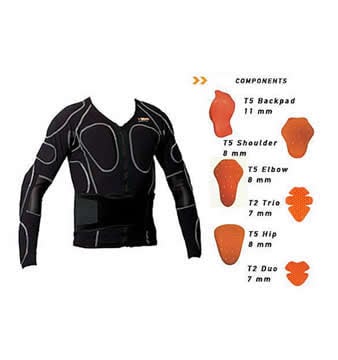More and more often the clothing assumes functional roles well as aesthetic. Just think of military equipment or articles for extreme sports. A garment that contains both previous examples can surely be the Endoacustica suit with rubber shock (purchased separately).
The fabric that carries the padding, is in lycra, while the padded areas are covered with an abrasion resistant cordura with Teflon finish. This type of padding, combined with an hard and resistant shell, works much better than any other rigid protection currently available on the market, which clearly penalizes the flexibility and freedom of movement.
Functional Clothing With Support – Your Best Protector
Even if they are very resistent, the overalls are very thin (max. 9 mm) and therefore can be worn like a second skin under clothing. As absurd, the harder you hit the padding, the better it works. The padding material is flexible, breathable, re-usable and washable and it’s made of a revolutionary material called d3o (dee-three-oh) which is made of “Intelligent Molecules” that flow with you as you move but on shock/impact lock together, in a fraction of a second, to absorb the impact.
A revolutionary garment in short, increasingly used by athletes of extreme sports, stuntmen, actors, martial artists, groups attack and many other enthusiasts and professionals.
The functional clothing also tries to help people with physical problems, such as the overall made by the University of Illinois, which could help the blinds. The outfit applies pressure on the body that warns you when someone is nearby or when you are close to objects and obstacles. The dress is made up of robotic arms and sensors which send an ultrasonic signals, it’s called SpiderSense, because it recalls the abilities of spiders.
The functional clothing suit is organized in modules and each module is a small box of 6x4x3 cm which contains both the sensor for ultrasound both the arm, length 6 cm, able to rotate and to provide the necessary pressure to alert the user. SpiderSense can also be used by cyclists to provide them an idea of traffic, putting some sensors on the back and arms (such as rearview mirrors).
